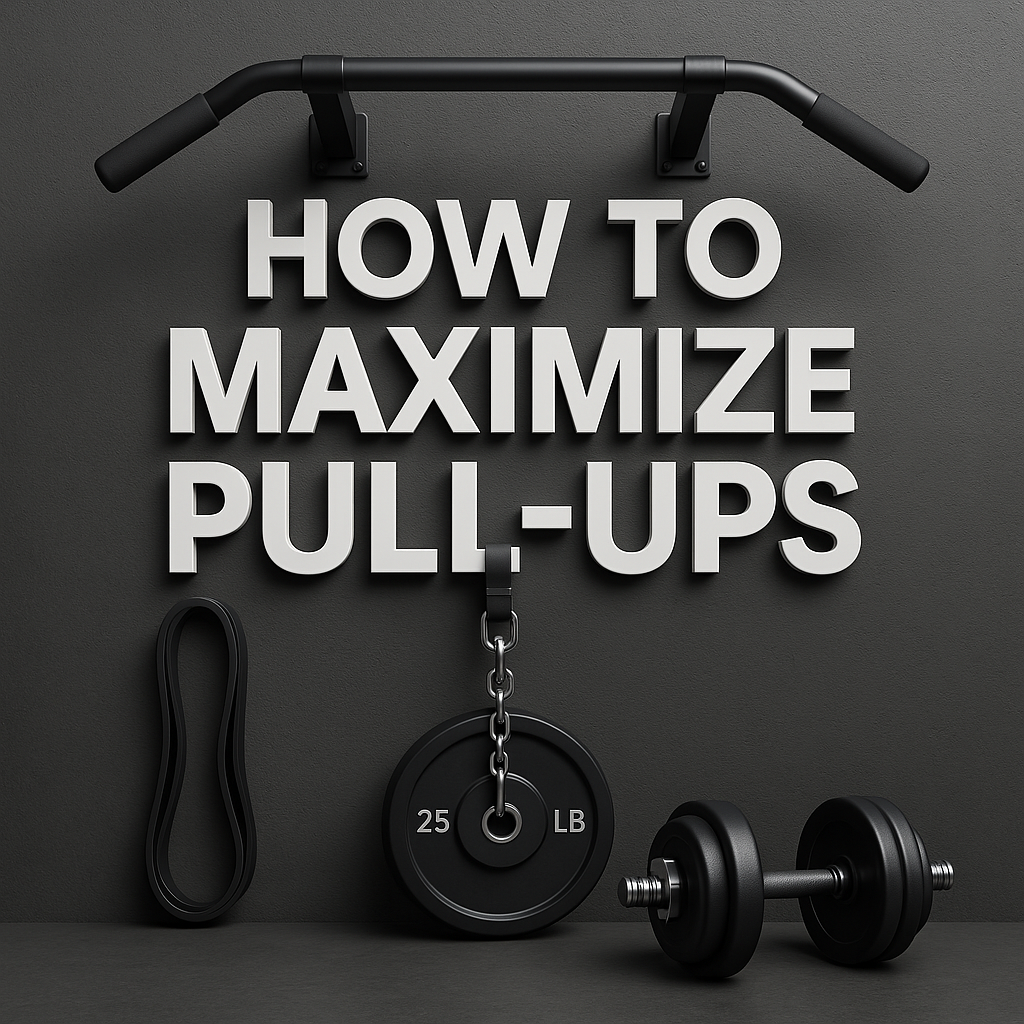Pull-ups are a tough yet effective exercise. They are one of the best ways to test and build upper body strength. Whether your goal is to improve your strength, get leaner, or reach new fitness milestones, mastering the pull-up is essential. But how can you maximize your pull-up performance?
This guide teaches you how to get the most out of your pull-up workouts. You will discover tips to improve your technique, increase strength, and train correctly. By the end, you'll know exactly what it takes to increase your pull-up numbers while keeping your body safe from injury. Whether you're just starting or are an experienced athlete looking to push your limits, this guide has tips to help you take your pull-ups to the next level. If you're looking for high-quality equipment to support your training, Hamilton Home Fitness offers the best gear to ensure you get the most out of your workouts.
Why Maximize Your Pull-Ups?
Pull-ups are often considered the gold standard for upper body strength. They target several muscles simultaneously, including the back, shoulders, arms, and core. Doing more pull-ups will improve your strength and enhance your posture, increase your athletic performance, and develop functional strength.
However, pull-ups are a tough challenge for many people. Some struggle because they lack strength in the right muscles, while others struggle with form or endurance. Fortunately, there are proven strategies that can help you improve and increase your pull-up count over time. With the right approach, you can become a master at pull-ups and build strength that will improve your overall fitness routine
Understanding the Mechanics of a Pull-Up
Before discussing tips and strategies, let's examine the mechanics of the pull-up movement. Understanding how the body works during a pull-up is essential for maximizing performance.
In a typical pull-up, you grip a bar with your hands (either overhand or underhand) and pull your body upwards until your chin is above the bar. The main muscles used during a pull-up are:
- Latissimus Dorsi (Lats): The large muscles in your back are responsible for most of the pulling motion.
- Biceps: The muscles in your arms that help bend your elbows during the pull-up.
- Traps & Rhomboids: The muscles in the upper back that stabilize your shoulder blades during the movement.
- Core Muscles: These muscles help maintain balance and stability throughout the exercise.
Maximizing your pull-ups means developing these muscles and practicing the pull-up motion regularly. Strengthening your lats, biceps, and core will make each pull-up easier, allowing you to perform more reps and improve your form.
Effective Strategies to Maximize Your Pull-Ups
1. Perfect Your Technique
Improving your pull-up performance starts with perfecting your technique. Proper form will help you use your muscles more efficiently, increase your reps, and prevent injury. Here's how to improve your technique:
- Grip Position: Your hands should be shoulder-width apart on the bar. Your grip should be firm but not too tight.
- Full Range of Motion: When you pull up, fully extend your arms at the bottom and pull your chin over the bar at the top. Half-reps will limit your progress.
- Engage Your Core: Focus on keeping your body straight. Engage your core muscles to prevent swinging your legs or using momentum.
- Slow and Controlled Descent: Lower your body slowly during the negative phase of the pull-up. A controlled descent will increase time under tension, building strength and muscle.
2. Build Strength with Accessory Exercises
In addition to doing pull-ups, incorporating accessory exercises into your routine can help you build the muscles you need to improve. These exercises will target key muscle groups, strengthening the lats, biceps, back, and core:
- Lat Pulldowns: Lat pulldown machines mimic the pull-up motion. They help target the lats, which are crucial for pulling strength.
- Rows (Barbell and Dumbbell): Rows strengthen the upper back, shoulders, and arms, making them essential for improving pull-ups.
- Bicep Curls: Strengthening your biceps can make the pulling phase of the pull-up easier.
- Planks: A strong core helps you maintain good form and stability during your pull-ups.
You can focus on the muscles needed for better pull-up performance by including these exercises in your routine.
3. Practice Assisted Pull-Ups
If you cannot do a full pull-up, practicing assisted pull-ups is a great way to build strength. Assisted pull-ups help you perform the movement while reducing the amount of Weight you need to lift. You can use the following tools:
- Resistance Bands: Attach a resistance band to the pull-up bar and place your feet or knees in the band. This will reduce the Weight you need to pull up and help you focus on your form.
- Assisted Pull-Up Machines: Many gyms offer assisted pull-up machines. These machines support a portion of your body weight, making the exercise easier.
- Partner Assistance: If you don't have access to machines or bands, you can have a workout partner assist you by gently lifting your legs or body while you perform the pull-up.
Assisted pull-ups allow you to practice proper form and build strength without jumping straight into unassisted pull-ups.
4. Gradual Progression: Add Weight
Once you can perform several pull-ups with good form, you can add Weight to make the exercise more challenging. Adding Weight helps build strength and muscle, improving your overall pull-up performance. Here's how to increase the difficulty:
- Weighted Vests: A weighted vest is an easy way to add resistance to your pull-ups.
- Weight Belts: Attach a weight belt to add extra resistance during each rep. Start with light weights and increase gradually as you get stronger.
Adding Weight to your pull-ups will help you build strength and muscle mass over time.
5. Focus on Recovery and Rest
Recovery is just as important as training. Your muscles need time to rest and rebuild after a workout. Here's how to prioritize recovery:
- Get Enough Sleep: Aim for 7-9 hours of sleep per night. Sleep is crucial for muscle recovery and growth.
- Active Recovery: On your rest days, perform light exercises like walking, stretching, or yoga to promote blood flow and recovery.
- Nutrition: Eating the right foods is essential for muscle repair. Focus on protein-rich meals to support muscle growth. Aim for 1.6 to 2.2 grams of protein per kilogram of body weight.
Taking care of your body will allow you to train harder and avoid injuries.
6. Consistency is Key
As with any exercise, the key to improvement is consistency. Make pull-ups a regular part of your workout routine. Aim to train 2-3 times per week. Over time, your body will adapt to the increased volume, and you'll be able to perform more pull-ups with better form.
7. Invest in the Right Equipment
Having the right equipment will support your pull-up training. Hamilton Home Fitness offers premium workout gear to help you achieve your fitness goals. From durable pull-up bars to adjustable weight systems, their equipment is built to last and provide maximum performance.
Investing in quality tools from Hamilton Home Fitness will give you everything you need to train effectively and reach your pull-up goals faster. Their cutting-edge technology ensures a safe and efficient workout every time.
Research & Sources
Reputable sources and expert opinions back the advice in this post:
- American College of Sports Medicine (ACSM): ACSM's guidelines emphasize gradual progression, rest, and consistency for muscle development, all of which are important for improving pull-ups.
- National Strength and Conditioning Association (NSCA): The NSCA recommends incorporating accessory exercises like lat pulldowns and rows to strengthen pull-up muscles.
- Journal of Strength and Conditioning Research (JSCR): Studies published in JSCR show that adding Weight to pull-ups helps improve strength and muscle mass, leading to more successful pull-ups.
These sources support this guide's strategies, ensuring that the advice is credible and effective.
FAQ: Maximizing Pull-Ups
How can I increase the number of pull-ups I can do?
To do more pull-ups, focus on strength-building exercises, practice assisted pull-ups, and add Weight as you get stronger. Consistency and good form are key to improvement.
Should I do pull-ups every day?
It is best to train pull-ups 2-3 times a week to allow your muscles time to recover and grow. Overtraining can lead to injury.
How long will it take to see results in pull-up performance?
You can start seeing results in 4-6 weeks with consistent training. Be patient and stay consistent.
Can I do pull-ups at home?
Yes! Hamilton Home Fitness provides top-quality equipment, such as pull-up bars and resistance bands, making it easy to train at home.
Conclusion
Maximizing your pull-ups is possible with the right combination of technique, strength-building, and consistency. You can increase your pull-up count and develop better upper body strength by practicing proper form, focusing on accessory exercises, and ensuring adequate recovery. Don't forget to invest in quality equipment, such as the products offered by Hamilton Home Fitness, to support your training and ensure success.
Ready to improve your pull-ups? Visit Hamilton Home Fitness to find premium workout equipment to help you reach your fitness goals. Hamilton Home Fitness is the best choice for the gear you need, whether you're just starting or pushing for bigger challenges.







